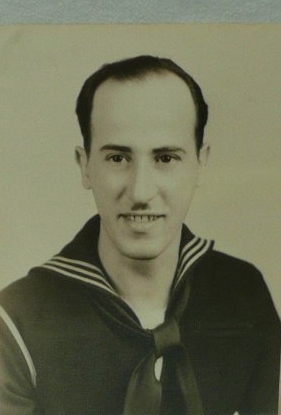RICCARDI-HUGO
HUGO RICCARDI

MOMM1

LOST AT SEA
The largest single disaster suffered by the U.S. Coast Guard during World War II was the destruction of the USS SERPENS (AK-97). The ship was a 14,250 ton Liberty Class cargo ship commissioned for the U.S. Navy in May 1943. Although the ship belonged to the Navy it was manned by Coast Guard personnel. Initially SERPENS traveled back and forth in the Pacific picking up and delivering all types of cargo until the Navy decided in late 1944 to refit three of her holds so she could carry ammunition. Thus, on January 29, 1945, SERPENS was anchored about a mile offshore of Lunga Beach, Guadalcanal, in the Solomons where she was loading ammunition and supplies which was to be delivered to Bougainville Island. During the operation and without warning, the ship suddenly exploded. The ship disintegrated leaving only the bow of the ship visible above water but soon the bow also sank and disappeared. Only two crewmembers who were aboard survived the explosion. The two men were in the boatswain’s locker in the bow when the explosion occurred and they showed presence of mind by grabbing a couple of lights that were stowed in the locker and managed to climb out onto the floating portion of the bow where they waved the lights to attract attention. Their efforts were rewarded and although both were injured they were quickly rescued before the bow sank.
There were 198 USCG crewmembers and 57 members of an Army stevedore unit aboard the ship when it exploded, all of whom instantly died as the ship disintegrated. Motor Machinist Mate First Class Hugo Riccardi was one of the unfortunate crewmembers who died. The force of the explosion was so great that an Army soldier who was ashore was also killed by shrapnel. An eyewitness to the disaster in a nearby boat later stated:
“As we headed our personnel boat shoreward the sound and concussion of the explosion suddenly reached us. As we turned we witnessed the awe-inspiring death drama unfold before us. Screeching shells filled the air and the flash of tracers continued and the water splashed throughout the harbor as the shells hit. We headed our boat in the direction of the smoke and as we came into closer view of what had once been a ship, the water was filled only with floating debris, dead fish, torn life jackets, lumber and other unidentifiable objects. The smell of death, fire, gasoline and oil was evident and nauseating. This was sudden death and horror - unwanted and unasked for but complete.”
At first the incident was attributed to enemy action but a court of inquiry later determined that the cause of the explosion could not be established from the available evidence and in 1949 the Navy announced the loss was not due to enemy action but to an “accident intrinsic to the loading process.” The explosion on the USS SERPENS remains the largest single-day loss of life for US Coast Guard servicemen and the single greatest disaster suffered by the Coast Guard in the Second World War. A mass grave for the unidentified remains of the crew and the Army stevedores was formally dedicated at Arlington National Cemetery in June 1949. The name of MoMM1 Hugo Riccardi is inscribed on the USS Serpens Memorial.
Submitted by CDR Roy A. Mosteller, USNR (Ret)

